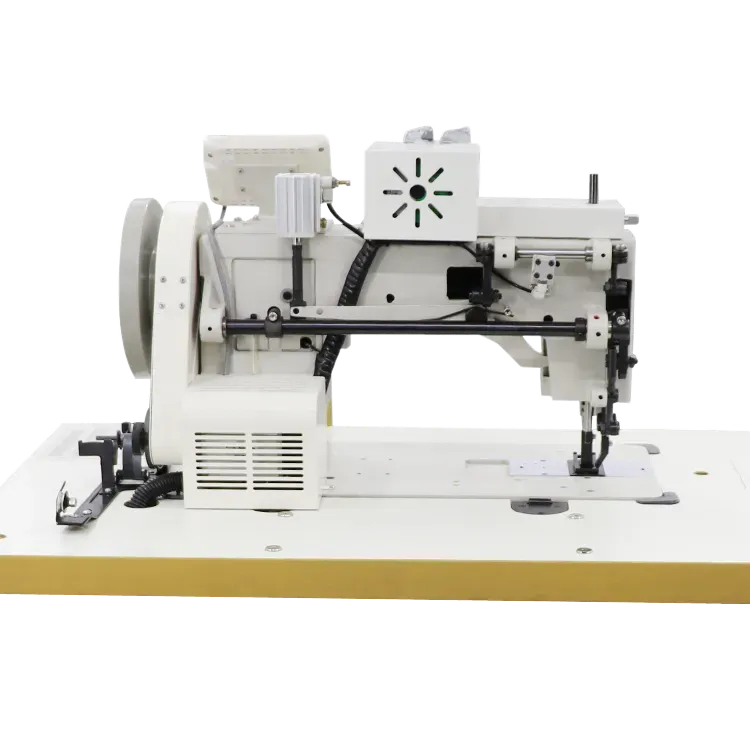typical leather sewing machine
Typical Leather Sewing Machines A Comprehensive Overview
Leather sewing machines play a vital role in various industries, including fashion, upholstery, and accessory design. Unlike standard fabric sewing machines, these specialized machines are engineered to handle the unique characteristics and challenges posed by leather. In this article, we will explore the typical features of leather sewing machines, their types, and practical considerations for choosing the right one for your needs.
Understanding Leather as a Material
Leather is a durable and flexible material made from the hides of animals, and it has a distinct texture and thickness that can vary significantly. This presents specific challenges to sewing machines, as leather can be harder to pierce, may chip or tear if not handled properly, and often requires a special set of tools and techniques in sewing. Thus, it is essential to use a sewing machine designed for leather to ensure precision and durability in the final product.
Key Features of Leather Sewing Machines
1. Stitching Power Leather sewing machines generally come with a powerful motor to handle thicker materials. This feature is crucial for sewing multiple layers of leather, particularly when working on items like bags, jackets, or furniture upholstery.
2. Needles Leather requires heavier and sharper needles than those used for regular fabric. Leather sewing machines typically come equipped with specific leather needles, which have a wedge-shaped point to penetrate the material cleanly without causing damage.
3. Walking Foot and Feed Mechanism Many leather sewing machines are equipped with a walking foot, which helps to move multiple layers of leather through the machine evenly. This feature prevents the layers from shifting and ensures that the stitches remain consistent and aligned.
4. Adjustable Presser Foot The presser foot on leather sewing machines often has adjustable pressure settings. This allows users to tailor the foot's pressure depending on the thickness and type of leather being used, ensuring smoother operation and better results.
5. Sewing Speed Speed is another critical factor; high-speed leather sewing machines can sew through layers quickly and efficiently. However, the speed can also be adjusted for delicate sections of the work.
6. Stitch Types Leather sewing machines can often accommodate a variety of stitch types (e.g., straight, zigzag, and decorative stitches), allowing for versatility in design and functionality.
Types of Leather Sewing Machines
typical leather sewing machine

1. Walking Foot Sewing Machines These are the most common type used for leather. As mentioned, they feature a walking foot for better feeding of fabric, which is particularly useful for thick and heavy leathers.
2. Industrial Leather Sewing Machines Designed for high-volume production environments, these machines offer robustness and speed. They are typically used by manufacturers who specialize in leather goods.
3. Heavy-Duty Home Sewing Machines For hobbyists or small-scale producers, heavy-duty machines that can handle relatively thick fabrics, including leather, are also available. While they may lack some features of industrial machines, they can still be effective for smaller projects.
4. Sewing Machines with Leather Attachments Some standard sewing machines can be modified with special attachments for leather sewing. However, their effectiveness varies, and they may not provide the same quality as dedicated leather machines.
Choosing the Right Leather Sewing Machine
When selecting a leather sewing machine, consider the following factors
- Project Type Assess the thickness and type of leather you'll be working with. For light leather, you may need a different machine than for heavy, top-grain leather.
- Budget Leather sewing machines can range from budget models to high-end industrial options. Identify your budget and find a machine that balances cost with features that meet your needs.
- Features Needed Determine what specific features are necessary for your sewing projects. If you plan on producing intricate designs or working with various leather types, a machine with versatility and advanced features may be beneficial.
- Brand and Reviews Research brands with a good reputation for leather sewing machines. User reviews can provide insights into performance and durability.
Conclusion
In summary, typical leather sewing machines are specialized tools that cater to the unique properties of leather. With powerful motors, precise needles, effective feeding mechanisms, and various stitch options, they are essential for anyone working with leather. Whether for professional manufacturing or personal projects, selecting the right leather sewing machine can significantly impact the quality and efficiency of your work. As you venture into the world of leather crafting, an understanding of these machines will empower you to create beautiful, lasting leather products.
-
Heavy Duty Leather Sewing Machine: A Must-Have for Professional LeatherworkNewsMay.28,2025
-
Leather Sewing Machine: Essential for High-Quality LeathercraftNewsMay.28,2025
-
Extra Heavy Duty Sewing Machine for Premium Leather ApplicationsNewsMay.28,2025
-
Walking Foot Cylinder Arm Sewing Machine: Precision and Power CombinedNewsMay.28,2025
-
Industrial Cylinder Arm Sewing Machine: Engineered for High-Performance StitchingNewsMay.28,2025
-
Cylinder Bed Sewing Machine: A Powerful Solution for Precision StitchingNewsMay.28,2025
-
Zigzag Sewing MachineNewsMay.12,2025





























